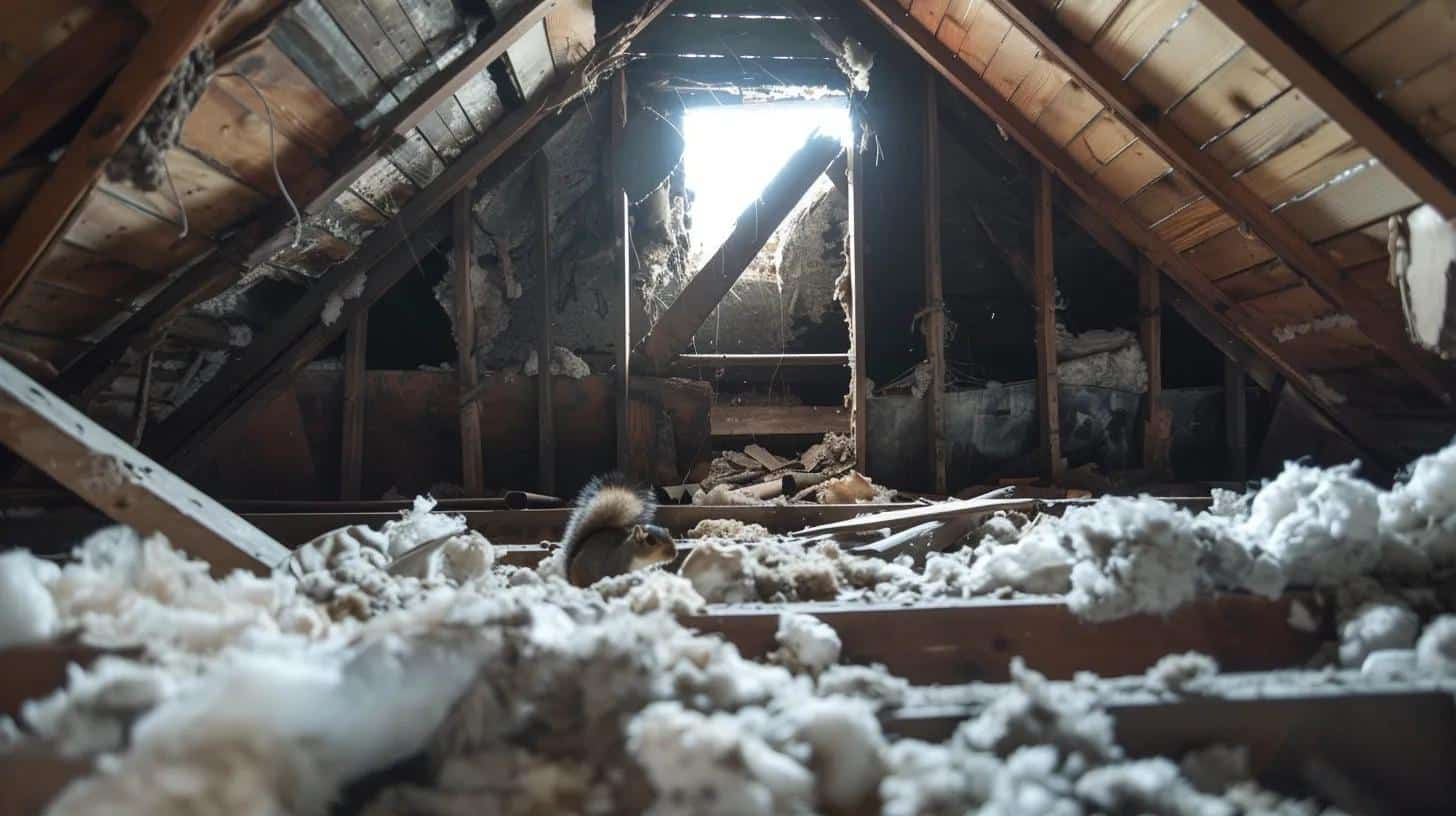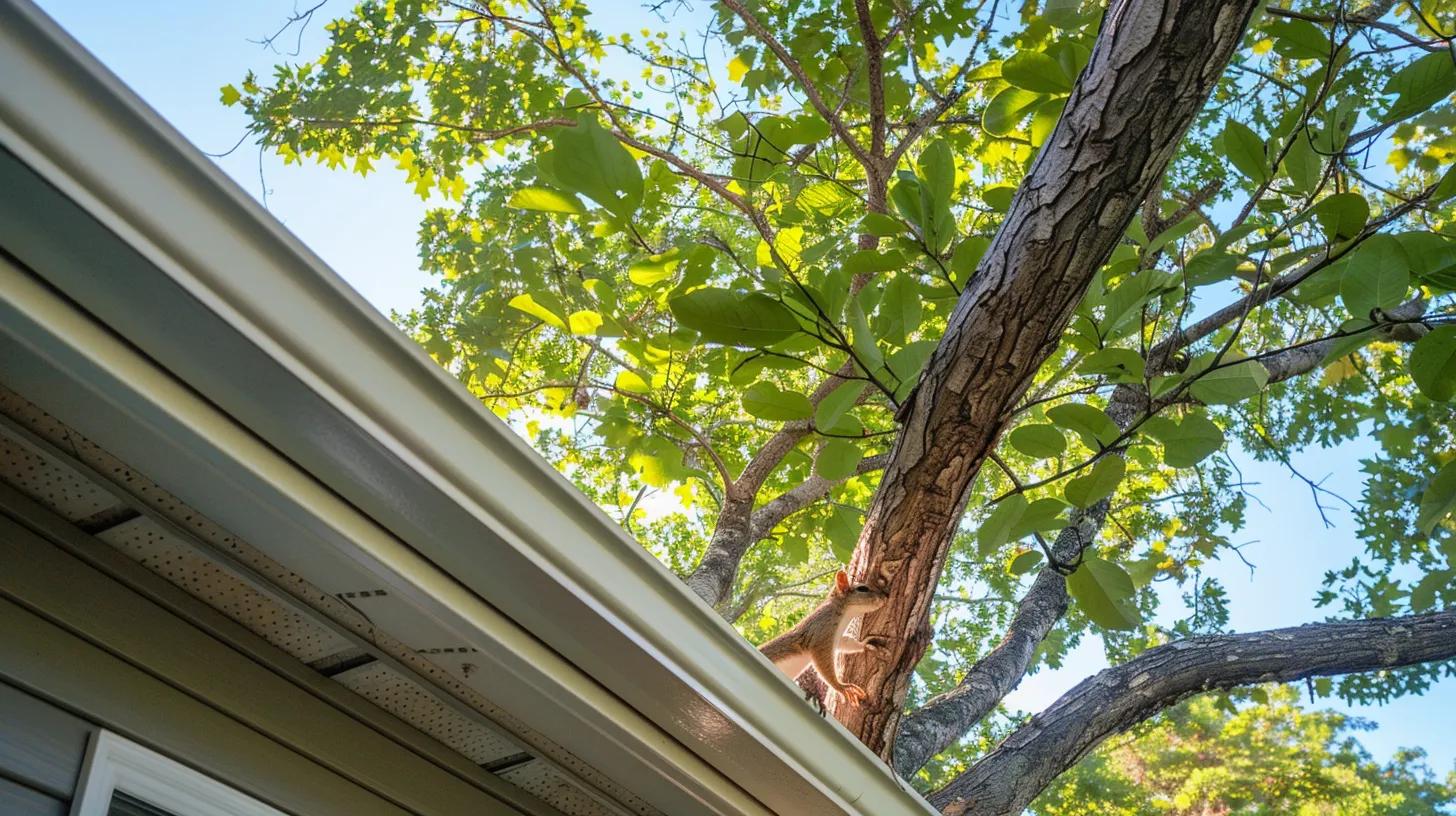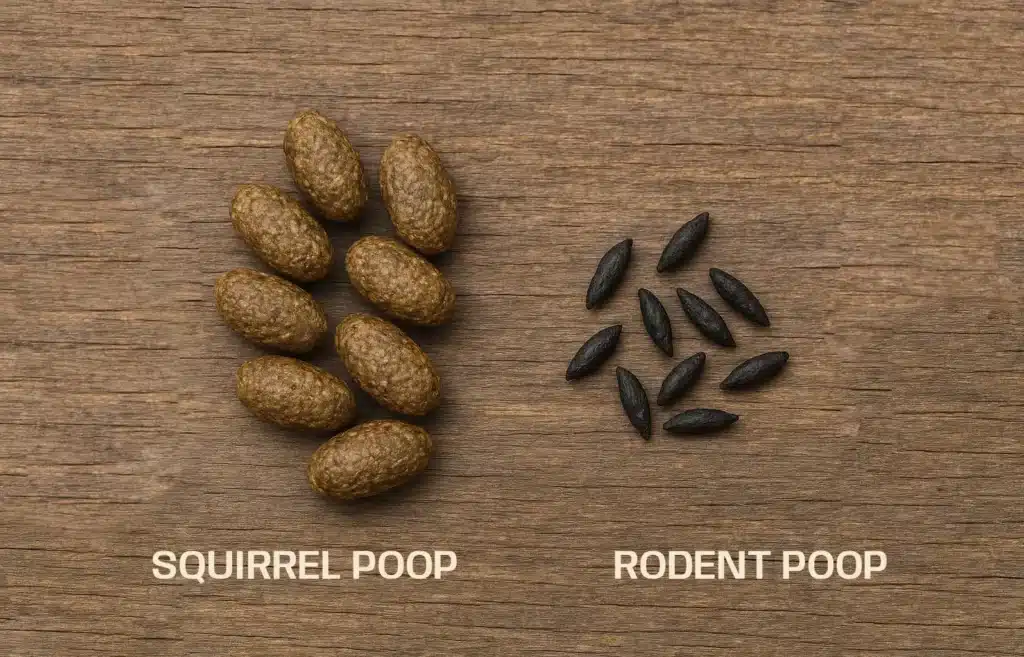How to Identify Squirrel Droppings vs. Other Rodents
If you suspect you have squirrels in your home or business, one of the telltale signs is their droppings. Knowing what squirrel poop looks like — and why it’s a problem — can help you act quickly before the damage (and health risks) escalate.
What Does Squirrel Poop Look Like?
Squirrel droppings can easily be mistaken for rat feces at first glance, but there are key differences.
- Shape & Size: Squirrel pellets are slightly larger and more barrel-shaped, while rat droppings are smaller and have pointed ends.
- Color & Texture: Fresh droppings are dark brown and smooth, but they may lighten in color as they age.
- Common Locations: You might find squirrel poop under trees, near bird feeders, on rooflines, or inside attics and crawl spaces.
If you’re unsure whether you’re looking at squirrel or rat droppings, our rodent identification guide can help you tell them apart.
Signs of Squirrels Indoors

In many cases, you’ll hear or see squirrel activity before spotting their droppings. Watch — and listen — for:
- Thumping or scampering noises in the attic or walls
- Squealing or chittering sounds overhead
- Damaged insulation, chewed wood beams, or gnawed electrical wiring (a potential fire hazard)
Squirrels indoors aren’t just a nuisance — they can also introduce fleas, ticks, and other pests. Their droppings and nesting material may attract flies, while airborne waste particles can worsen allergies and asthma.
Why Squirrel Droppings Are a Health Concern
Squirrel feces aren’t just gross — they can be hazardous:
- Allergens: Droppings and fur dander can trigger asthma and allergy flare-ups.
- Parasites: Fleas and ticks carried by squirrels can bite humans and pets, potentially transmitting disease.
- Bacteria: Waste can harbor harmful bacteria that contaminate indoor air and surfaces.
This is why professional cleaning and removal are strongly recommended if squirrel droppings are found inside.
How Squirrels Get Inside

Squirrels are agile climbers, and gaining entry into a home or business isn’t hard if vulnerabilities exist. They can enter through:
- Gaps in fascia boards
- Broken attic vents
- Torn window or soffit screens
- Rooflines with overhanging tree limbs providing a “bridge”
If you own a commercial property, our guide to preventing wildlife in food-handling facilities covers key exclusion steps.
Preventing Squirrel Infestations
The best defense against squirrel problems is prevention:
- Trim Trees: Keep branches at least 6–8 feet from the roof.
- Seal Entry Points: Repair fascia boards, replace damaged vents, and patch screen tears.
- Remove Food Sources: Secure trash bins and remove bird feeders if squirrels are persistent.
- Schedule Professional Inspections: Annual wildlife inspections can detect vulnerabilities before squirrels move in.
Professional Squirrel Removal in New Jersey

If you’ve spotted squirrel poop, heard scratching in your attic, or noticed gnaw marks around your property, it’s time to call in the professionals. At Clearview Pest Control, we provide safe and humane wildlife removal across Bayonne, Englewood, and the surrounding areas.
We also offer:
- Detailed inspections to locate all entry points
- Exclusion services to keep squirrels out for good
- Sanitation and cleanup of droppings to protect your health
Learn more about safe wildlife removal methods and schedule your inspection today.
Clearview Pest Control is committed to protecting New Jersey homes and businesses from squirrels and other nuisance wildlife. Contact us for a free consultation and let our experts help keep your property safe, clean, and pest-free



